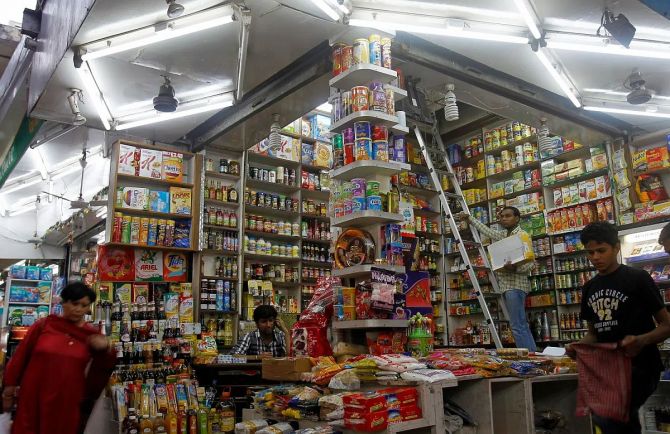Consumption, infra investments show recovery

Consumption and infrastructure investments are expected to show a strong recovery as the economy bounces back from two years of the Covid-19 pandemic, the first Advance Estimates of gross domestic product (GDP) for the current fiscal year (FY23) showed on Friday.
Analysts, however, warned that broad-based recovery is still some time away.
In nominal terms, private final consumption expenditure (PFCE), which is a proxy for household consumption, is expected to rise to Rs 164 trillion in FY23 from Rs 140.9 trillion in FY22 and Rs 120.3 trillion in FY21, the data released by the National Statistical Office showed.
As a percentage contributor to nominal GDP, PFCE’s share was 60.1 per cent in FY23, compared with 59.6 per cent and 60.8 per cent in the two preceding fiscal years.
“Although PFCE is expected to grow 7.7 per cent in FY23, we believe it is still short of a broad-based recovery.
“The current consumption demand is highly skewed in favour of goods and services consumed largely by the households falling in the upper income bracket.
“A broad-based consumption recovery, therefore, is still some distance away,” said Sunil Kumar Sinha, principal economist with India Ratings.
Gross Fixed Capital Formation (GFCF), a proxy for infrastructure investment, is expected to reach Rs 79.7 trillion in FY23, compared with Rs 67.6 trillion and Rs 52.6 trillion in FY22 and FY21, respectively.
That is a year-on-year rise of 18 per cent from FY22 to FY23.
As a percentage share of GDP, GFCF was 29.2 per cent in FY23, 28.6 per cent in FY22, and 26.6 per cent in FY21.
“The good news here is that the GFCF rate is expected to be higher at 29.2 per cent this year.
“While consumption has grown at 16 per cent, this is mainly due to the inflation impact besides pent-up demand, which has been reflected in the GST collections, too,” said Madan Sabnavis, chief economist with Bank of Baroda.
Government Final Consumption Expenditure is expected to be Rs 29.3 trillion in FY23, compared with Rs 26.3 trillion and Rs 23.9 trillion in the two preceding years.
As a percentage contributor to GDP, it declined to 10.7 per cent in FY23 from 11.1 per cent in FY22 and 12.1 per cent in FY21.
“A healthy growth of 11.5 per cent YoY in GFCF in FY23 reflects the sustained focus of the government on capex.
“This is more heartening because it has come on a high base of FY22 where by GFCF had grown 15.8 per cent,” said India Ratings’ Sinha. For the sustainable growth and recovery of the Indian economy, revival of private corporate sector capex is a must, he said.
Economists warned that most of the improvement in PFCE and GFCF came due to pent-up demand in the first half of the year, and a slowdown is being seen in the second half, something which will continue into the next year even though India will avoid a recession.
“A deceleration is largely anticipated in the second half of the current year due to base effect as well as adverse impact of slowing global growth.
“Recovery in household consumption and catch-up in contact-based services is expected to support growth this fiscal,” said D K Joshi, chief economist with CRISIL.
“Private consumption is expected to decline 0.2 per cent YoY in the second half, after growing 17.2 per cent in the first.
“Private consumption remains slowest to recover to pre-pandemic levels,” Joshi said.
Source: Read Full Article

